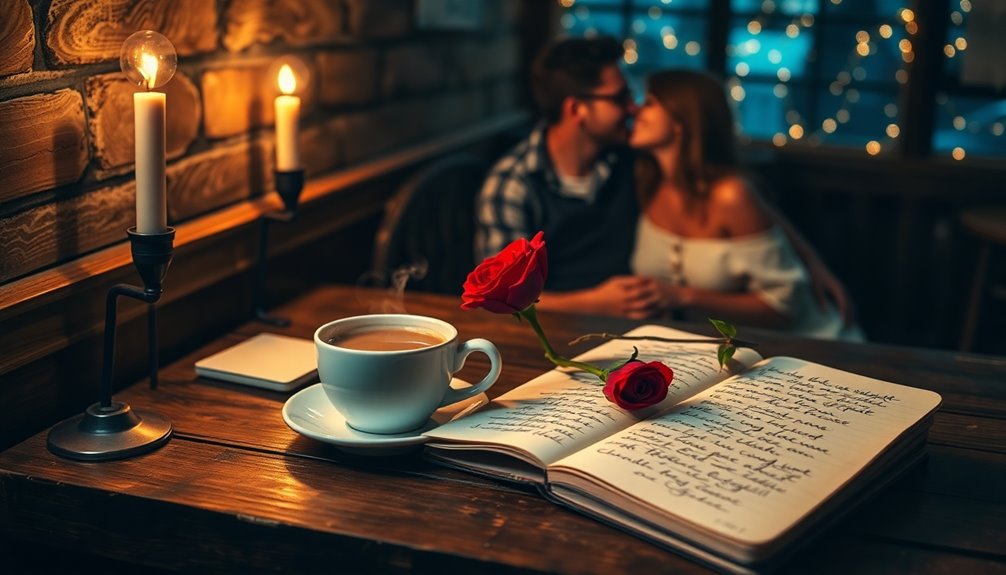To write the ultimate love story, craft compelling backstories that shape your characters and create unpredictable encounters that spark chemistry. Explore internal conflicts to deepen character development and introduce external obstacles that challenge love. Weave an emotional journey packed with authentic feelings and structure your narrative for maximum engagement. Finally, utilize evocative writing to evoke strong emotions that resonate. Stick around to discover more shocking techniques that will enhance your storytelling prowess.
Key Takeaways
- Create unpredictable encounters in unconventional settings to enhance intrigue and chemistry between characters.
- Introduce external obstacles like family rivalries or cultural differences to heighten tension and emotional stakes.
- Explore characters' vulnerabilities and past traumas to deepen their emotional journeys and connections with readers.
- Use vivid imagery and passionate writing to bring love scenes to life, ensuring authenticity and relatability.
- Balance tension and resolution in the narrative to engage readers and create memorable moments that resonate long after reading.
Craft Compelling Backstories That Shape Your Characters
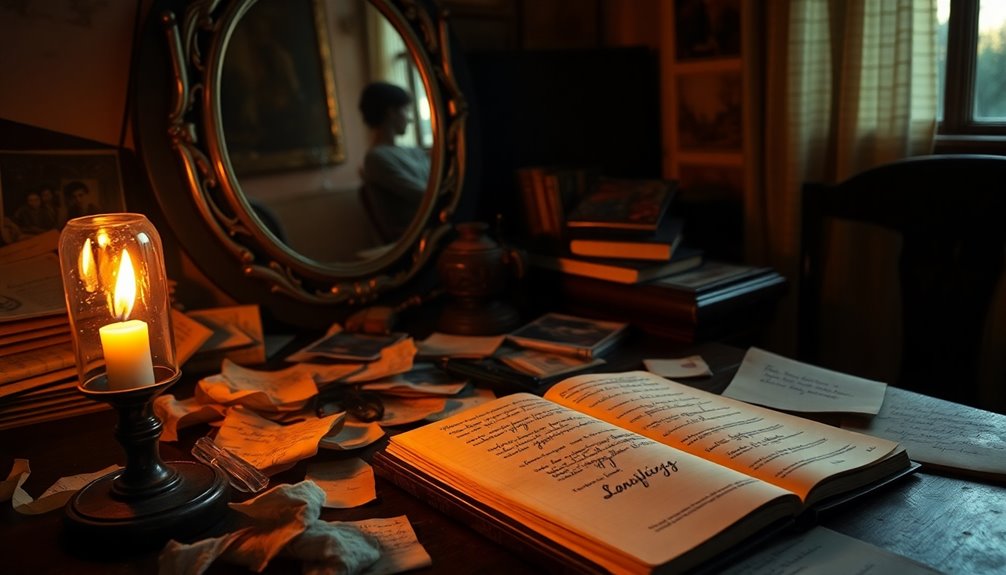
When you craft compelling backstories for your characters, you not only breathe life into them but also lay the groundwork for their motivations and actions.
Start by identifying key experiences that shape their personalities. Delve into family dynamics—consider how their upbringing influences their worldview.
Explore cultural impacts that shape their values and beliefs. Reflect on past failures, as these setbacks can drive characters toward specific choices. Character backstory can enhance depth and relatability, making your characters more engaging.
Develop personal philosophies based on their experiences to deepen their complexity.
Balance this backstory with your current narrative by integrating it gradually. Use dialogue and judicious flashbacks to reveal vital information without overwhelming readers.
Create Unpredictable Encounters That Spark Chemistry

Crafting compelling backstories lays the foundation for your characters, but it's those unpredictable encounters that truly ignite chemistry.
Set your scenes in unconventional places—a silent meditation retreat or a bustling backstage at a magic show. These unexpected settings spark intrigue and reflect protagonist personalities, enhancing the overall connection between your characters. As they navigate these unique environments, the essence of unconditional father-daughter love can inspire deeper emotional interactions.
Use your characters' actions to reveal their personalities; a nervous fidget or an avoided gaze can speak volumes.
Build tension through surprising twists or serendipitous moments that throw them together.
Engage the senses with vivid descriptions that let readers feel the electricity between them.
Balance ease and awkwardness in their interactions, creating a dynamic that keeps readers invested.
Explore Internal Conflicts to Deepen Character Development
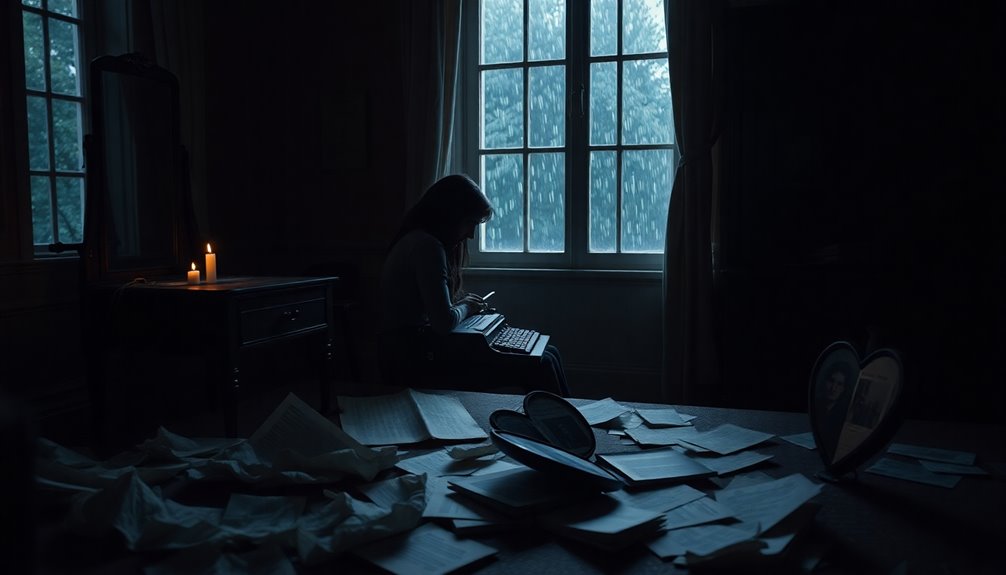
While characters can be compelling on the surface, their internal conflicts reveal the deeper emotional struggles that truly shape their journeys. These personal obstacles, like past traumas or fears of rejection, hinder their ability to embrace love fully. By delving into these conflicts, you create tension and drive the plot forward. Understanding that strong internal conflict is preferred by editors allows you to enhance your narrative's appeal. Let your characters' backstories inform their emotional vulnerabilities; this connection will engage readers. Additionally, mindfulness practices can help characters navigate their inner turmoil, making their growth more authentic. Use dialogue and reflection to expose their inner turmoil, adding complexity to their development. As characters confront and overcome these challenges, they'll grow, making their love story more satisfying.
Introduce External Obstacles That Challenge Love
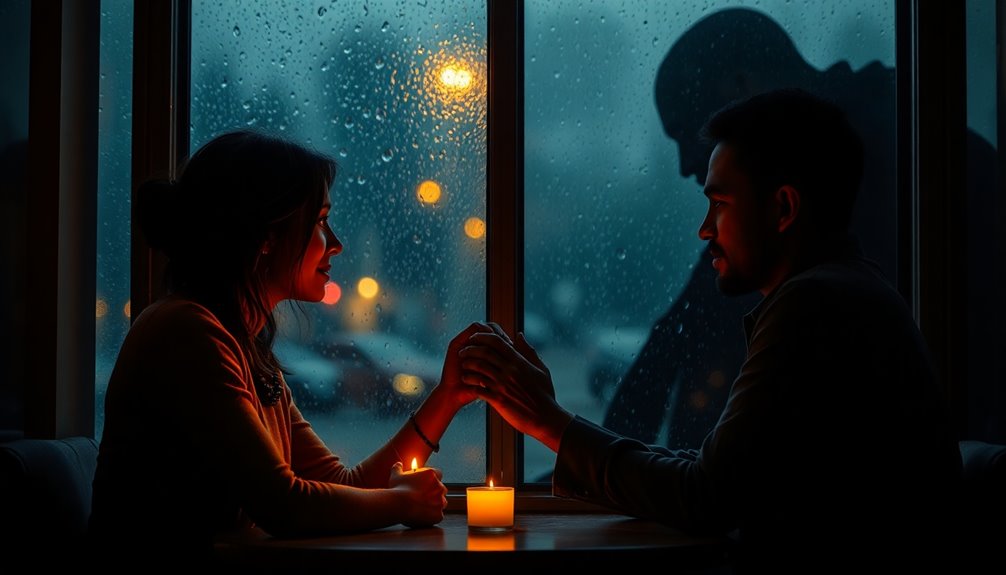
As you weave your love story, introducing external obstacles can intensify the emotional stakes and draw readers deeper into the narrative.
Consider family rivalries like in "Romeo and Juliet," where feuds create tension. Social status differences can also spark conflict, highlighting societal expectations that challenge your characters. These conflicts can lead to frequent breakups, as unresolved issues surface during their struggles.
Geographical barriers, such as long distances, can keep lovers apart, adding complexity. Cultural or religious differences may further complicate their relationship, especially in multicultural settings.
Professional conflicts or societal norms against their love can create additional hurdles. Additionally, these external conflicts often serve to enhance narrative tension, making the characters' journey more compelling.
Weave an Emotional Journey Filled With Authentic Feelings
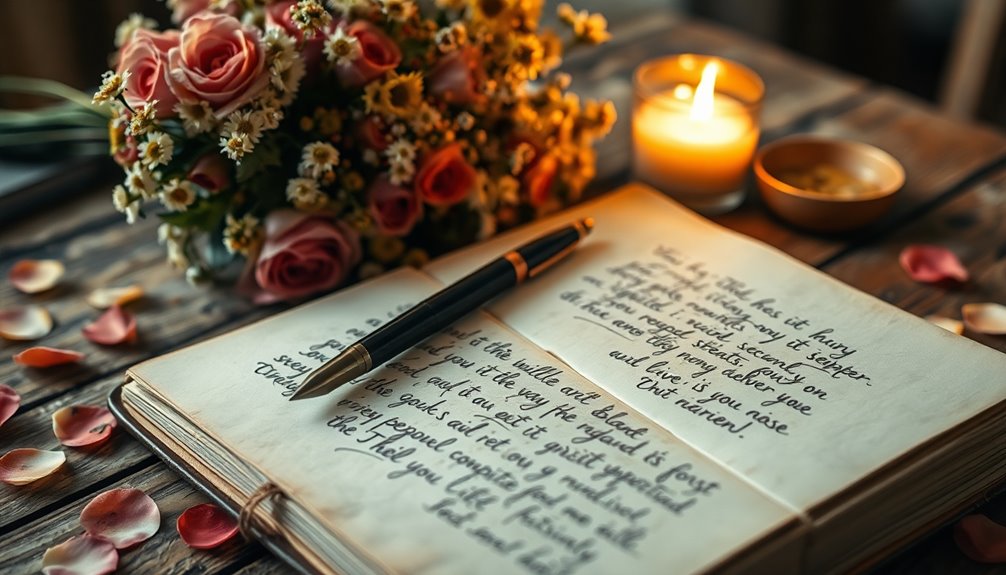
External obstacles can create tension in a love story, but it's the emotional journey that truly resonates with readers.
Dive deep into your characters' thoughts and feelings, allowing their vulnerabilities to shine through. When you showcase their fears and desires, readers will connect with them on a profound level. This connection is often enhanced by emotional depth that creates powerful bonds between characters and readers. The journey of self-discovery during challenging times can lead to personal growth that enriches their relationships.
Make sure to elevate emotional stakes; the challenges they face should feel real and significant. As your characters evolve, let their transformations stem from authentic emotional experiences.
Focus on building chemistry through anticipation and subtle moments, rather than rushing to resolution. Crafting a heartfelt narrative with genuine emotions will keep readers invested and rooting for your characters' happiness.
Ultimately, it's the authenticity of their journey that captivates.
Structure Your Narrative for Maximum Engagement

To craft a love story that engages readers from the start, begin with a captivating structure that draws them in and keeps them invested.
Start with a hook that reveals your protagonist's everyday life and emotional struggles. Introduce both main characters early, showcasing their unique personalities and conflicts. Research shows that emotional distress can significantly impact characters' decisions and relationships.
Set the scene vividly where they meet, making it unforgettable. Build anticipation by hinting at their potential relationship, despite seeming incompatibilities. It's important to remember that initial incompatibility creates compelling reasons for their challenges, enhancing the tension.
Clearly define their external goals and how these conflict with their budding romance. As the plot progresses, include an inciting incident to spark attraction, rising action with tension, and pivotal moments that deepen their connection.
This structured approach keeps readers engaged and eager for more.
Utilize Evocative Writing to Evoke Strong Emotions

While crafting a love story, evoke strong emotions through evocative writing that resonates with readers. Use sensory details to paint vivid scenes—let readers feel the warmth of a summer breeze or hear the soft whispers of affection. Authentic dialogue reflects your characters' personalities, deepening emotional connections. Immerse readers in settings that mirror or contrast characters' feelings, amplifying the narrative's emotional stakes. Highlight character vulnerabilities to enhance relatability, showcasing their authentic emotional journeys. Building tension through conflict can create a positive environment that keeps readers invested in the outcome. Finally, ensure a satisfying emotional payoff in your love scenes, allowing readers to feel rewarded. With passion and authenticity, your writing will resonate, creating a love story that lingers long after the last page. Remember, the audience serves as the true muse, guiding your narrative to evoke emotions that connect deeply with readers.
Frequently Asked Questions
How Do I Choose the Right Setting for My Love Story?
Imagine your characters meeting at a bustling city market, where the vibrant atmosphere pulls them together.
To choose the right setting for your love story, consider how it reflects cultural significance and emotional depth.
Think about urban versus rural; urban settings can foster chance encounters while rural areas might create intimacy.
Also, ensure the setting enhances the plot and character development, drawing readers into the world you've crafted.
What Are Effective Ways to Show Character Vulnerability?
To effectively show character vulnerability, let your characters express their true feelings and fears.
Let them make mistakes or face failures, revealing their human sides.
Use internal monologues to explore their thoughts and self-doubt.
Situational triggers, like loss of control or emotional reactions, can highlight their vulnerabilities.
How Can I Create Tension Without Relying on Clichés?
To create tension without relying on clichés, focus on unique situations that challenge your characters in unexpected ways.
Develop complex motivations to drive their actions, ensuring readers stay invested.
Keep outcomes unpredictable; subtle hints can signal future events without giving everything away.
Layer conflicts to add depth and allow room for character growth.
What Role Does Humor Play in a Love Story?
Humor plays a vital role in a love story, enriching the narrative and deepening character connections. It helps you create memorable moments that resonate with readers, lightening tense situations and showcasing the characters' personalities.
When characters share laughter, it signals attraction and strengthens their bond. Plus, humor can provide relief from emotional intensity, making the story more relatable and enjoyable.
Ultimately, it enhances the journey of love, making it both entertaining and authentic.
How Can I Ensure My Ending Feels Authentic and Satisfying?
To ensure your ending feels authentic and satisfying, focus on answering the main story question and providing closure for your characters.
Highlight their growth throughout the narrative, making sure their actions align with established traits.
Incorporate emotional resonance to deepen reader engagement while avoiding predictability.
Use little details for authenticity, and don't shy away from surprises that fit the story's logic.
This combination will leave a lasting impact on your readers.
Conclusion
As you stand at the crossroads of your love story, remember that every choice you make is a step down a winding path, where shadows of doubt and light of hope intertwine. Your characters, like travelers in a vast forest, must confront their fears and desires to find the treasure of true connection. Embrace the journey; it's the struggles and triumphs that will illuminate their hearts and yours, transforming mere words into a timeless tale of love.
